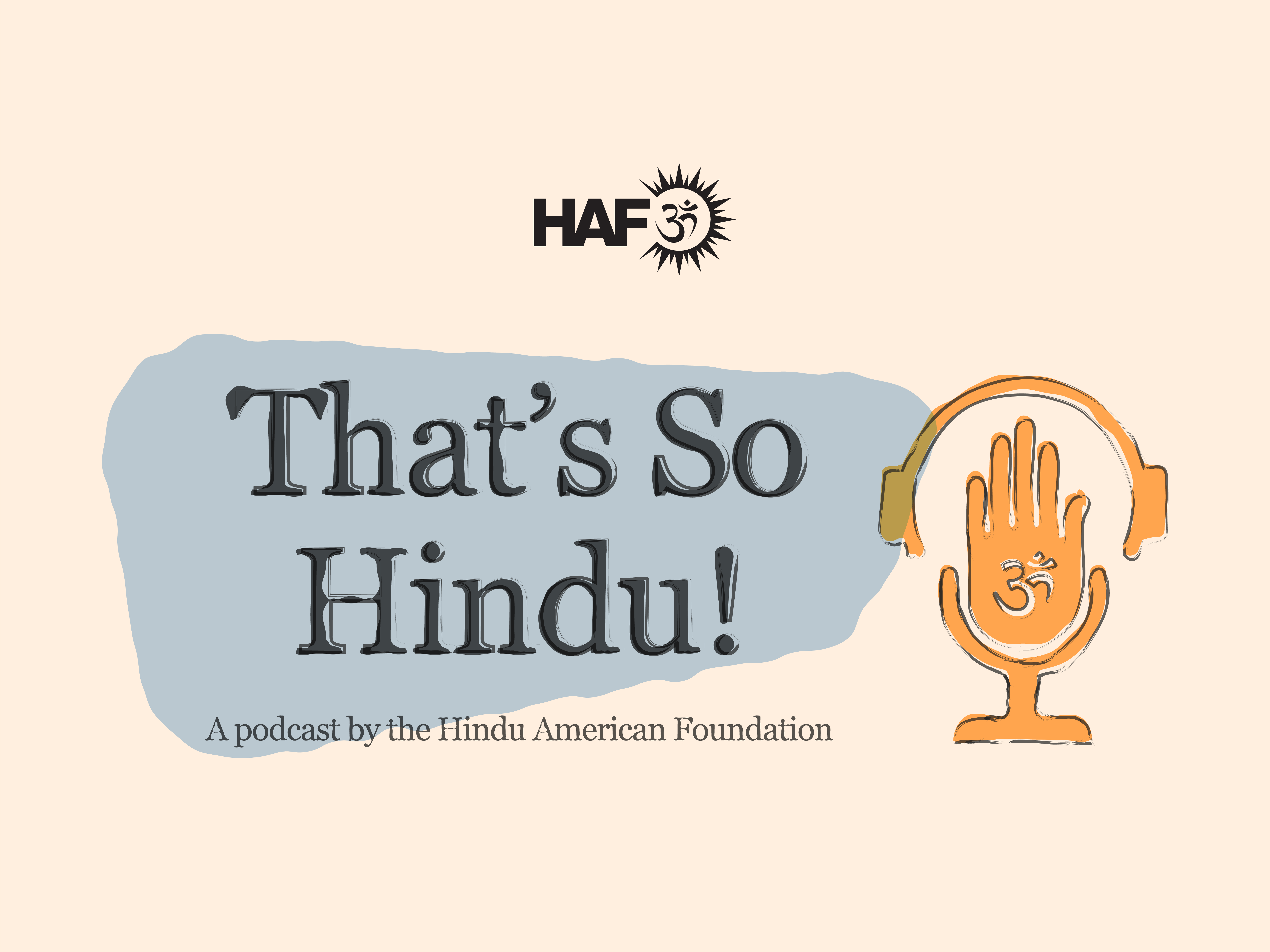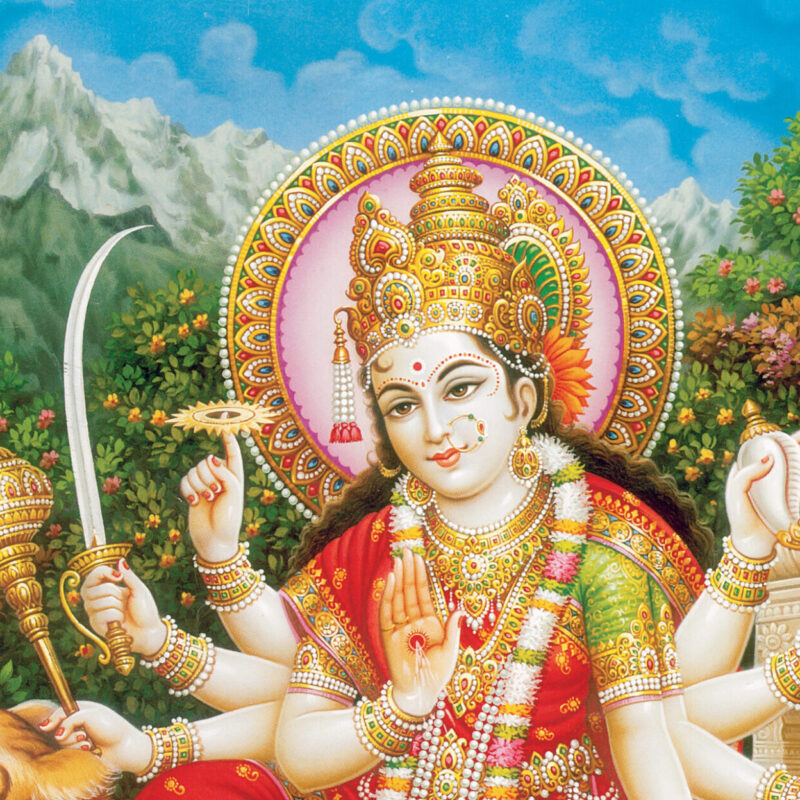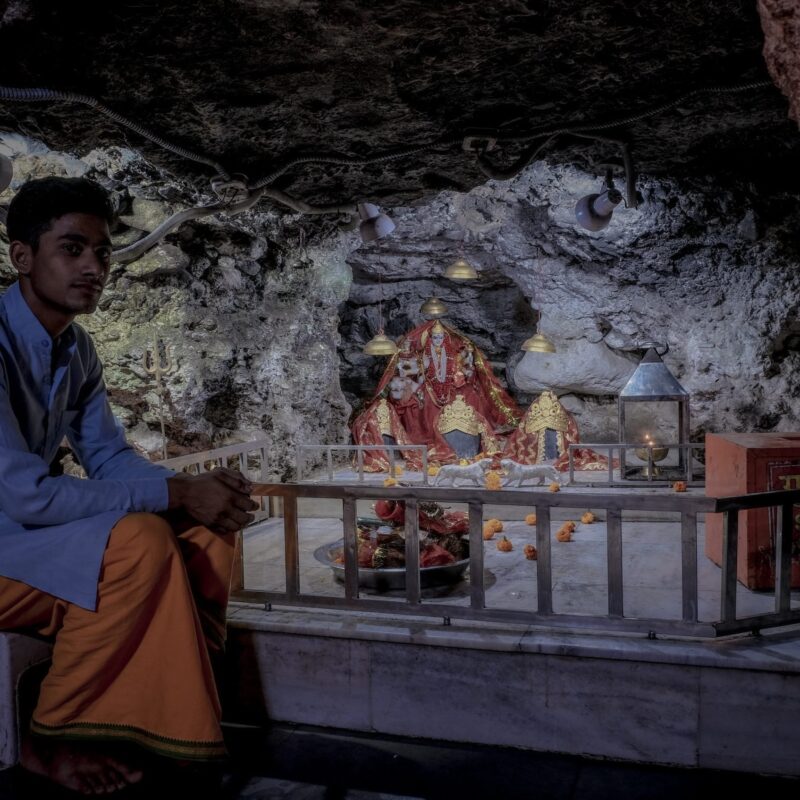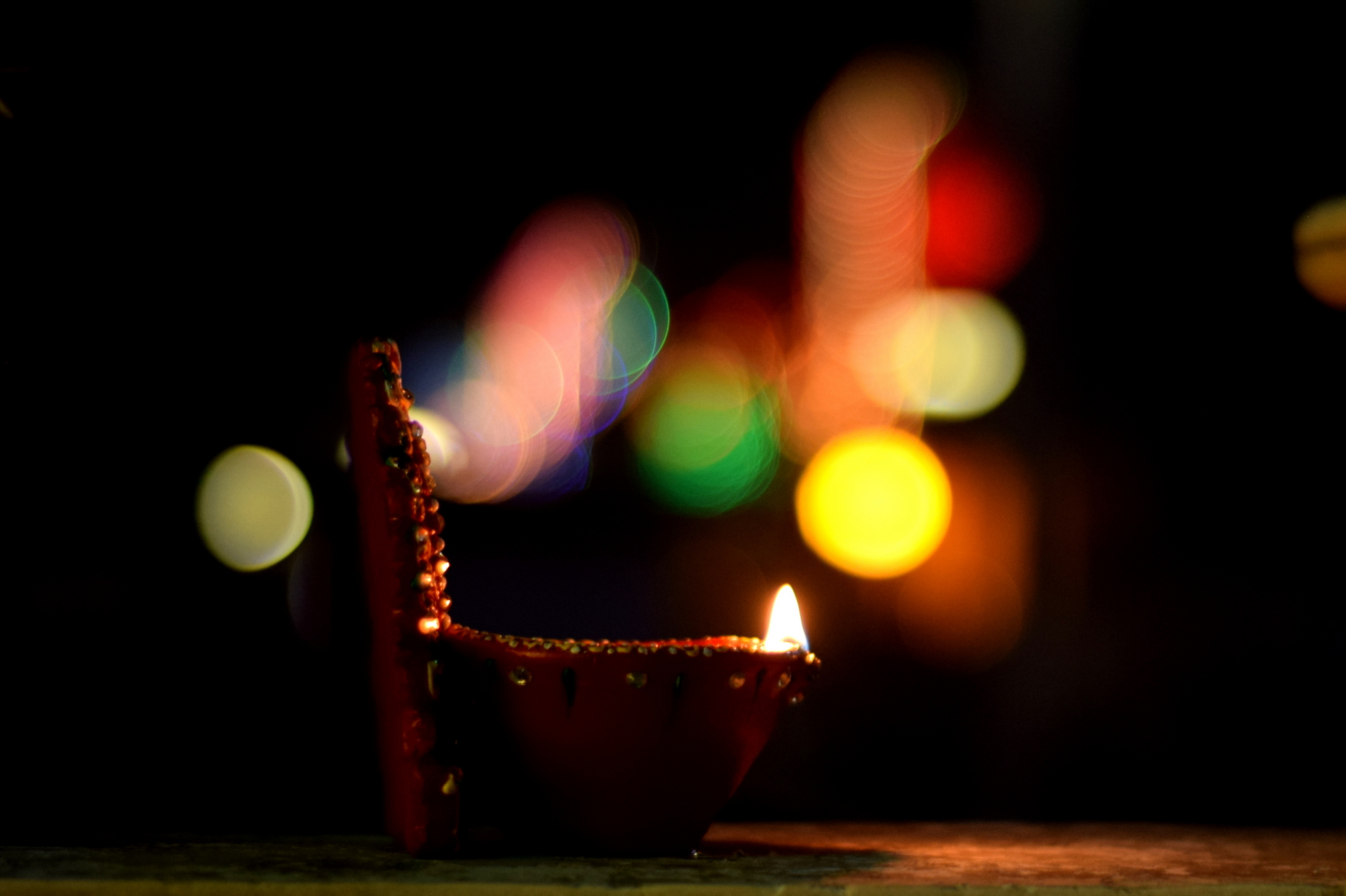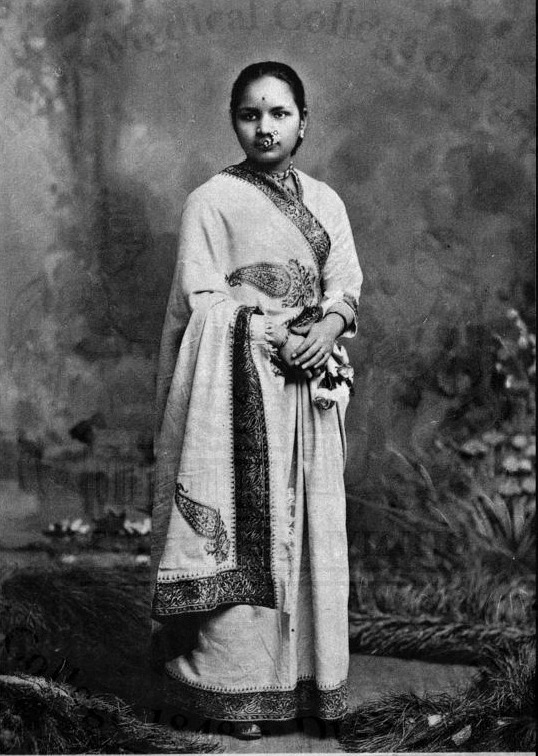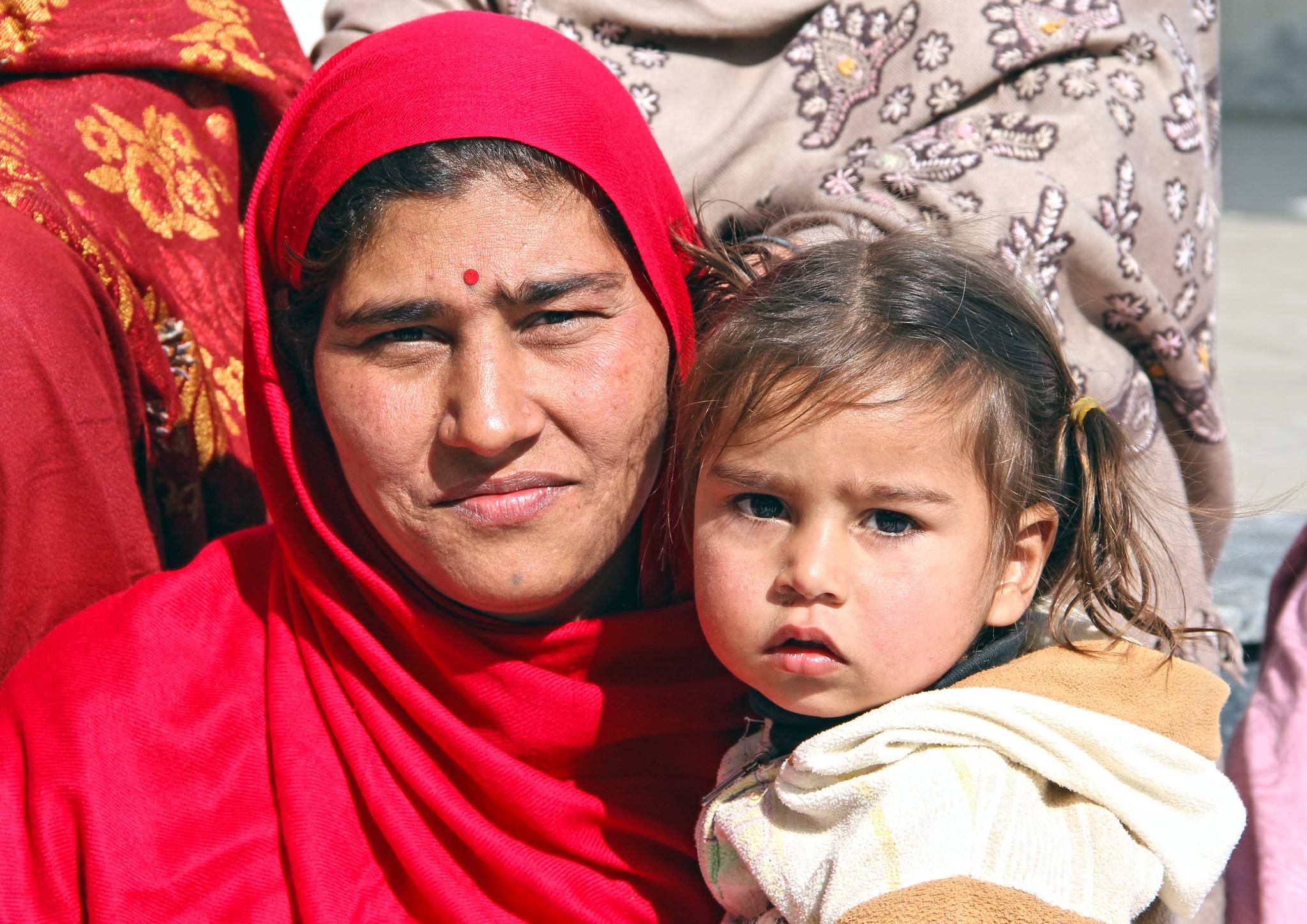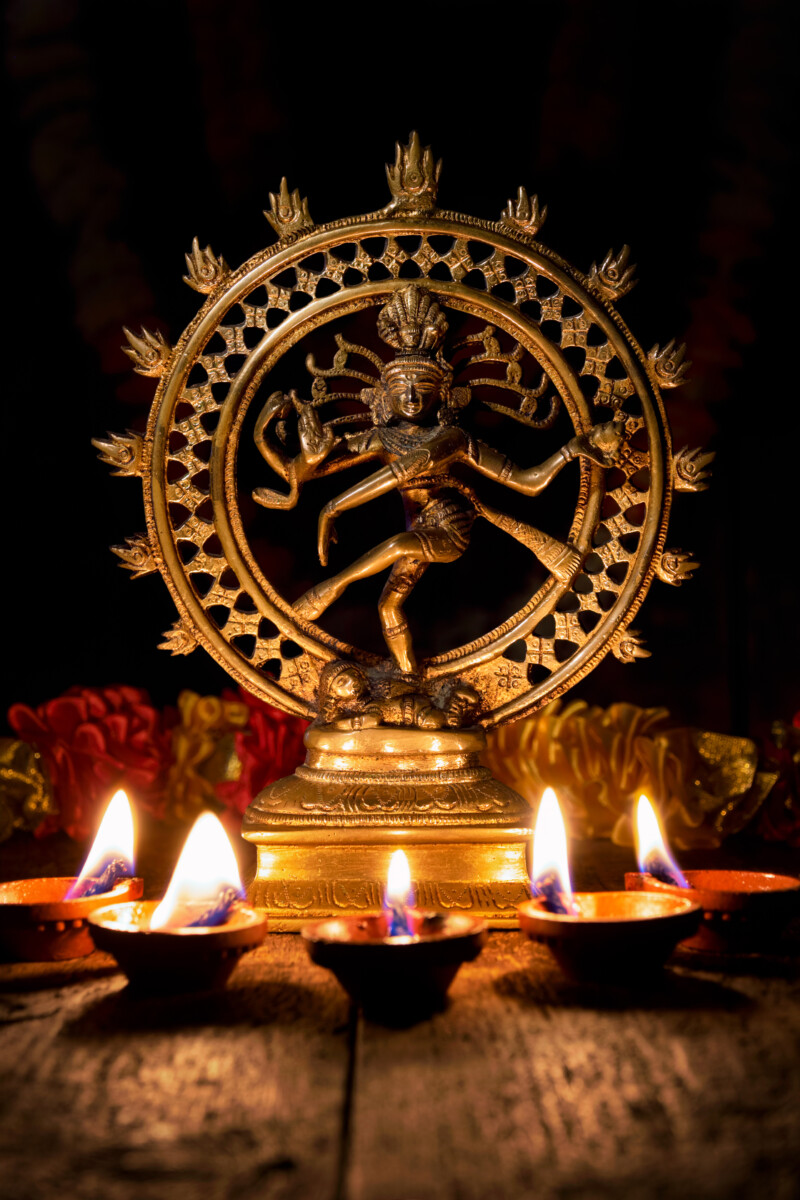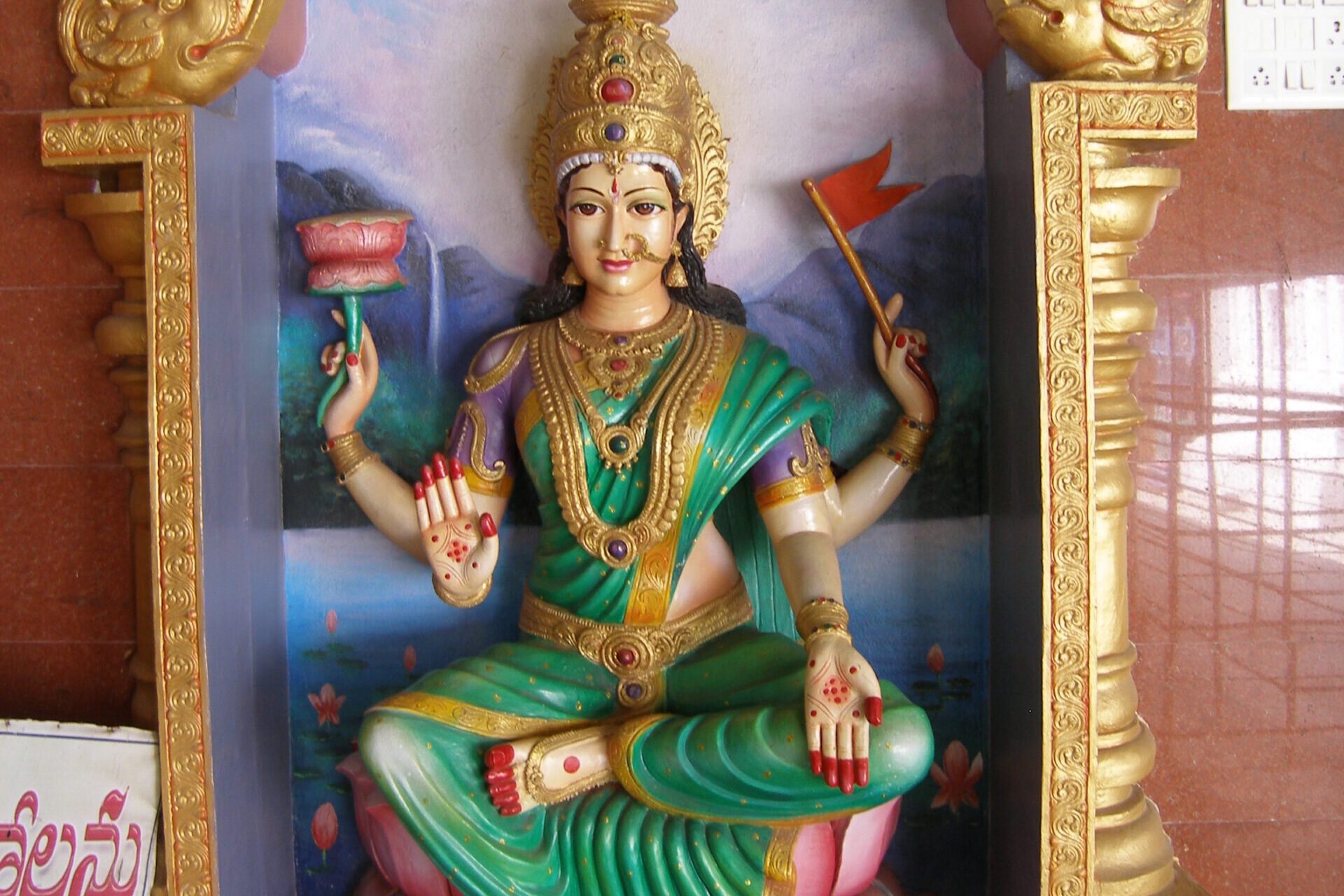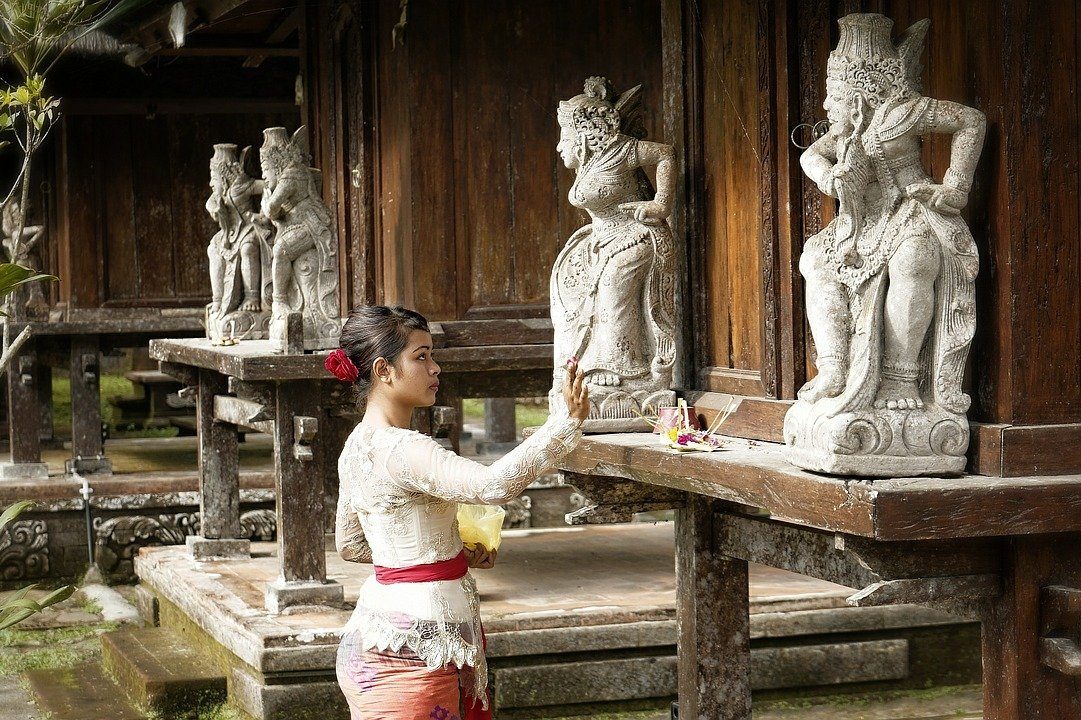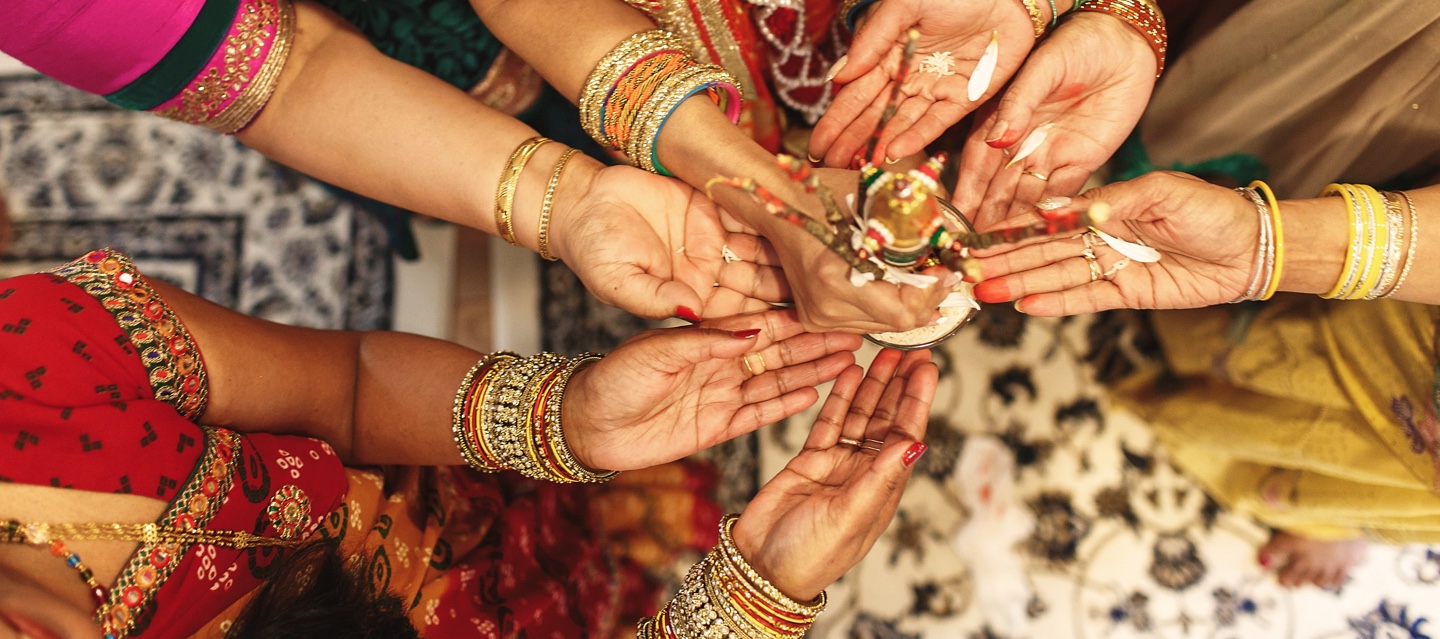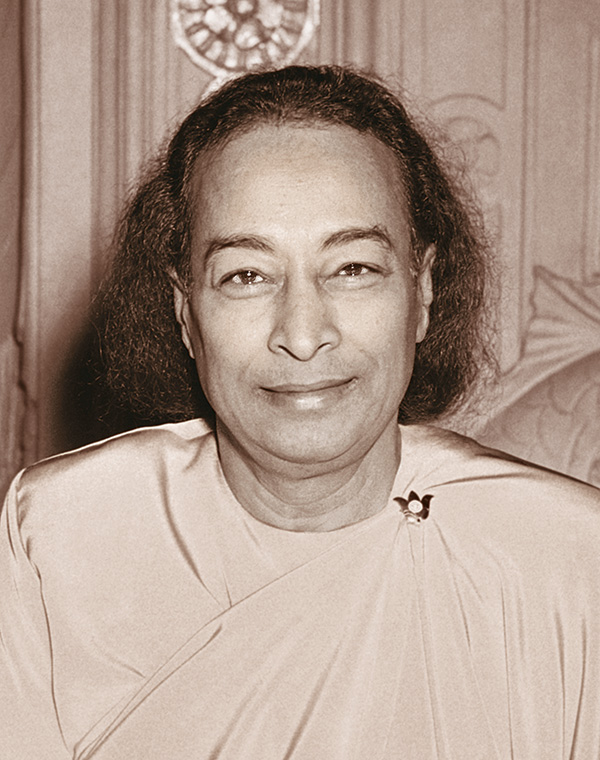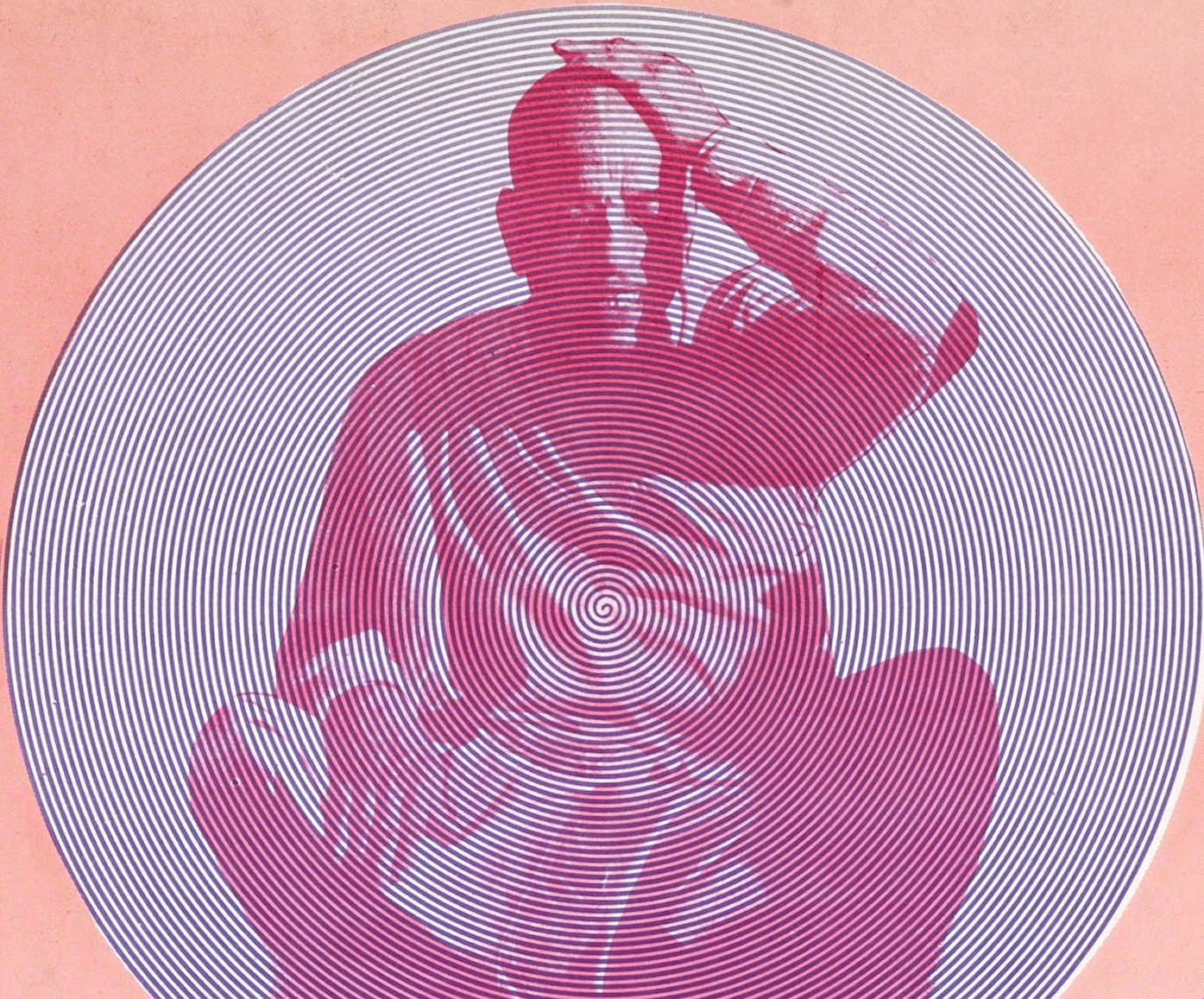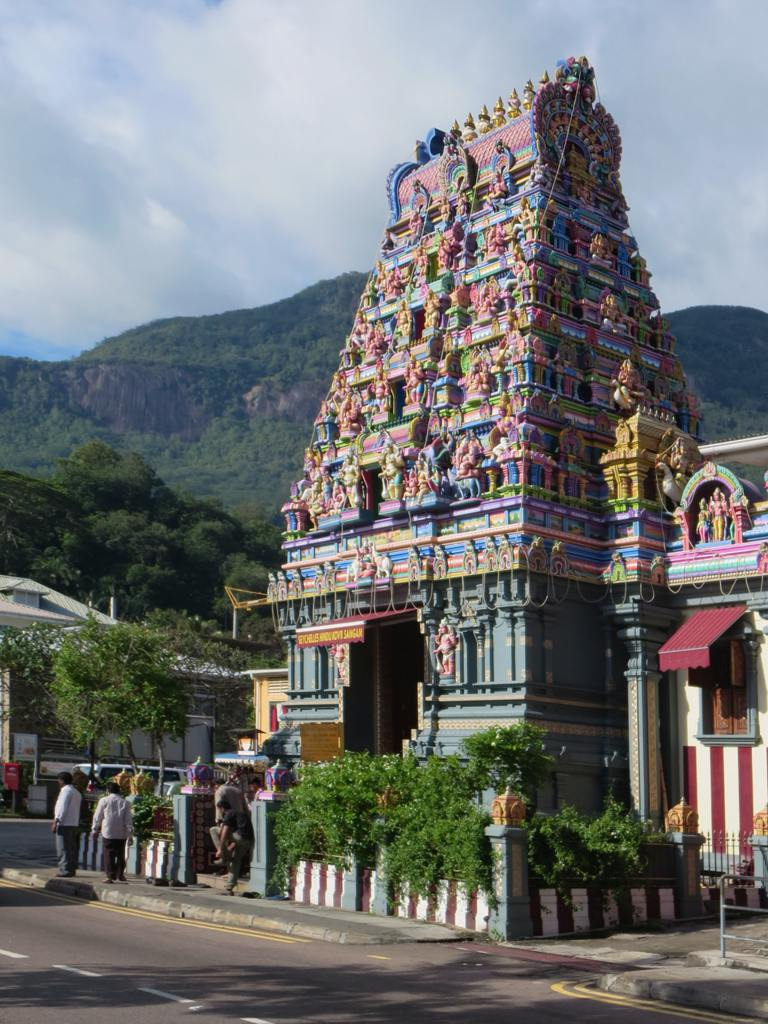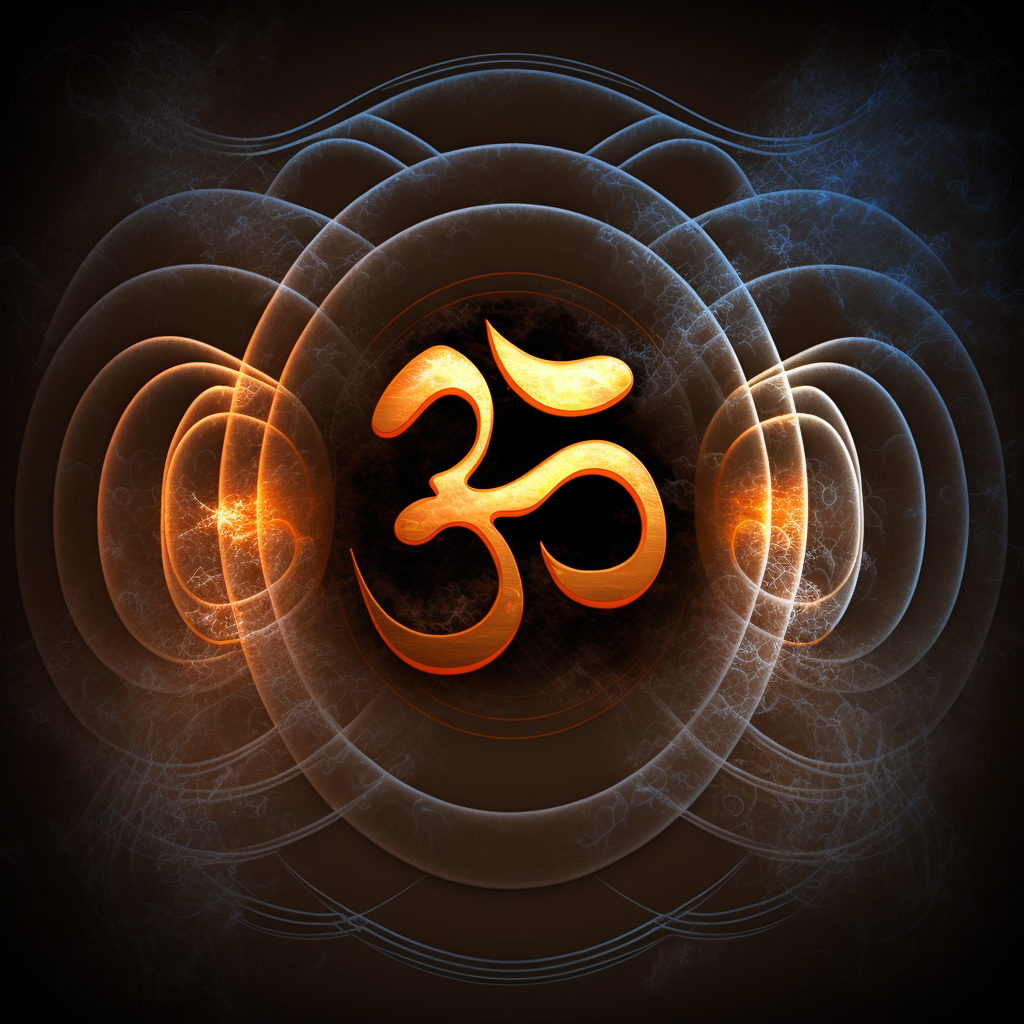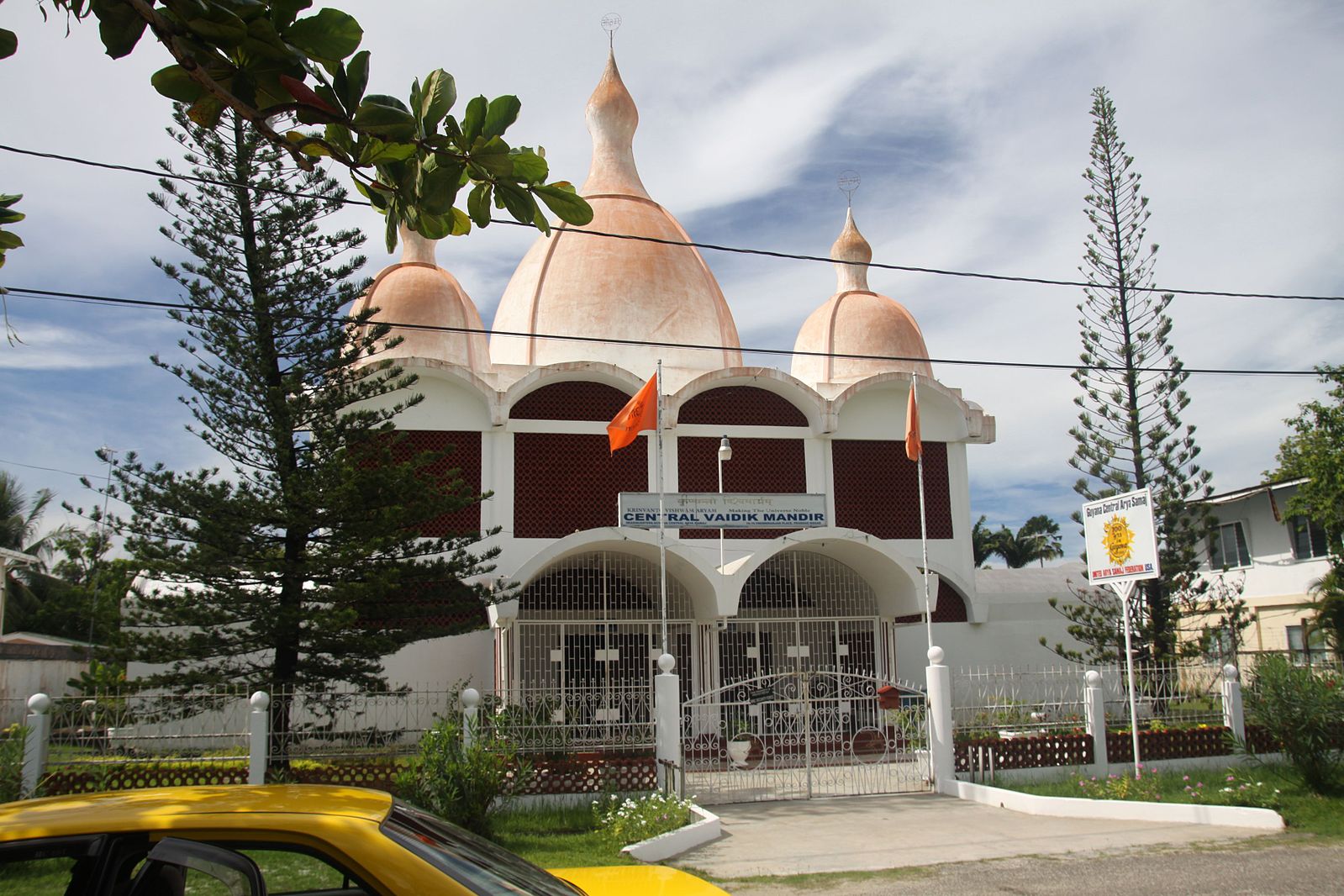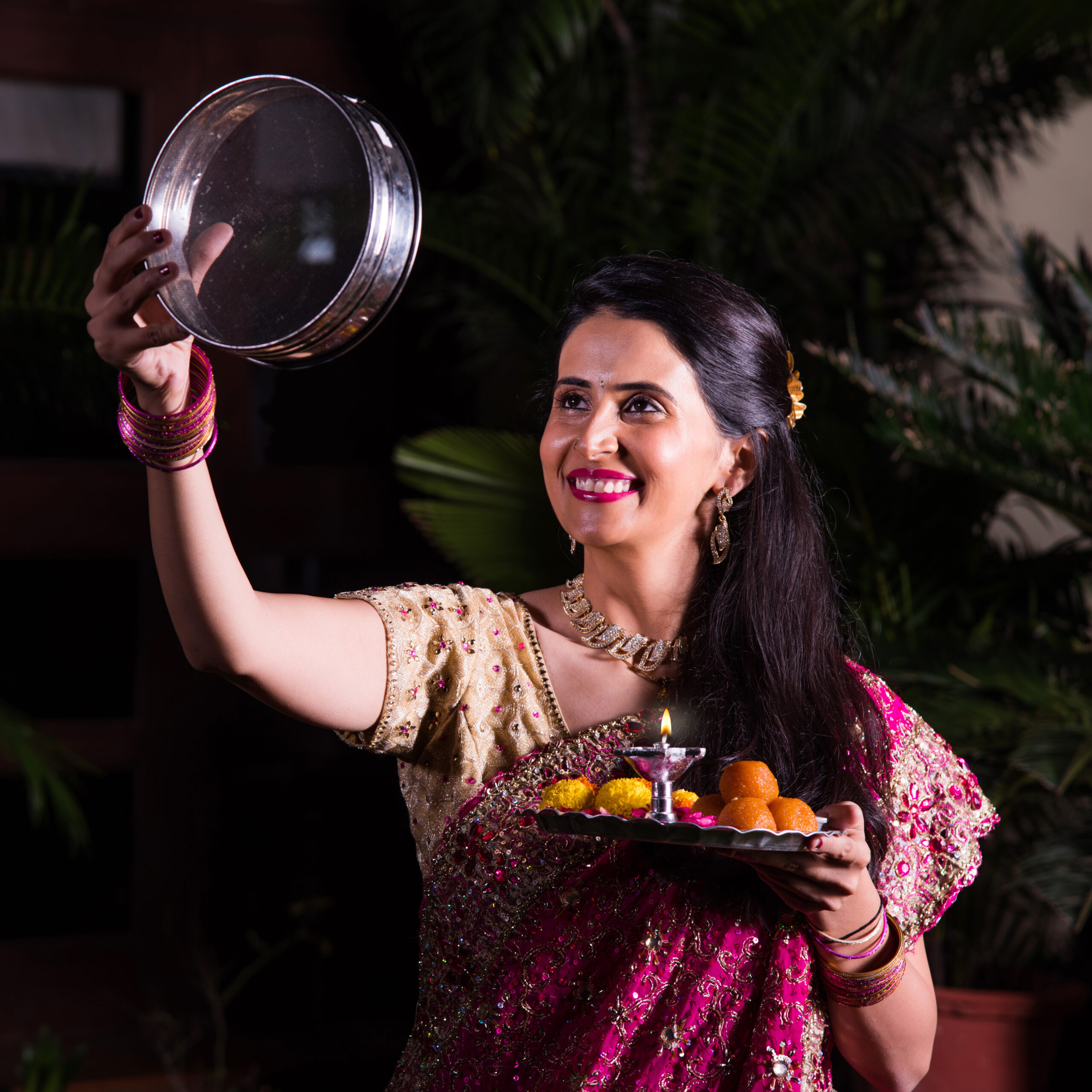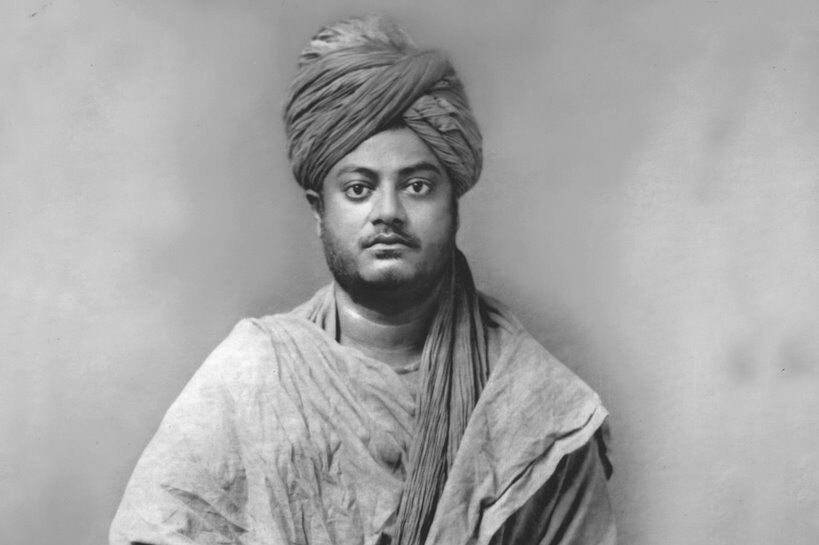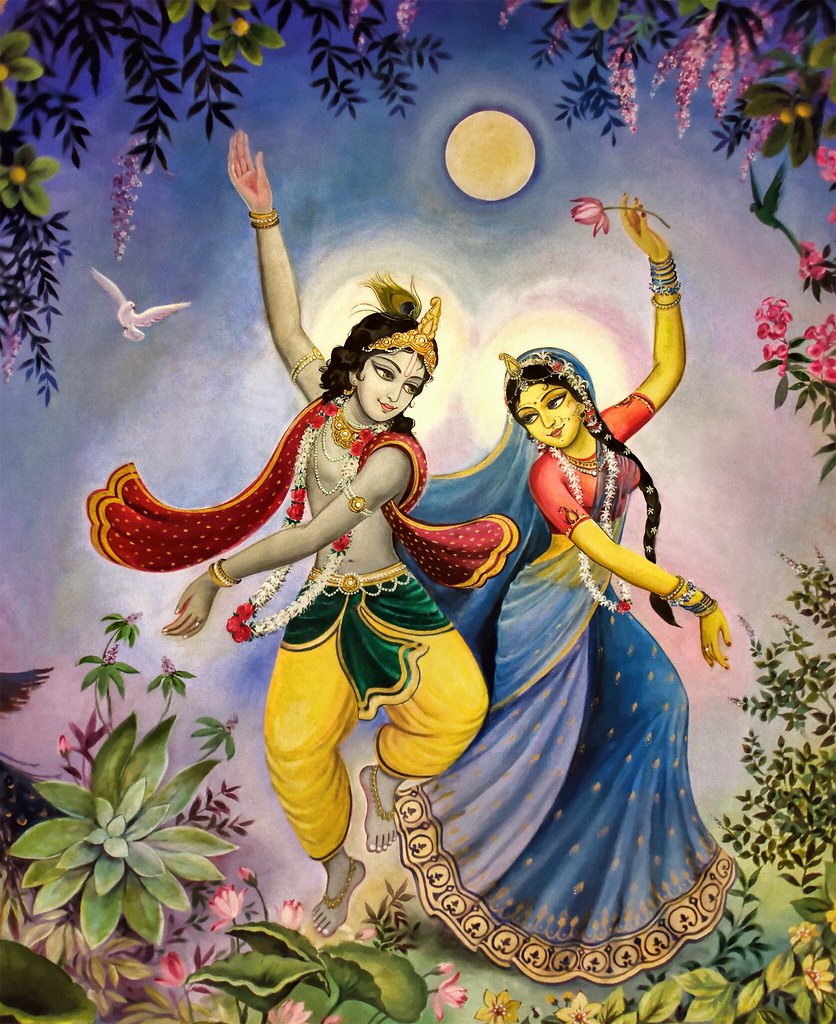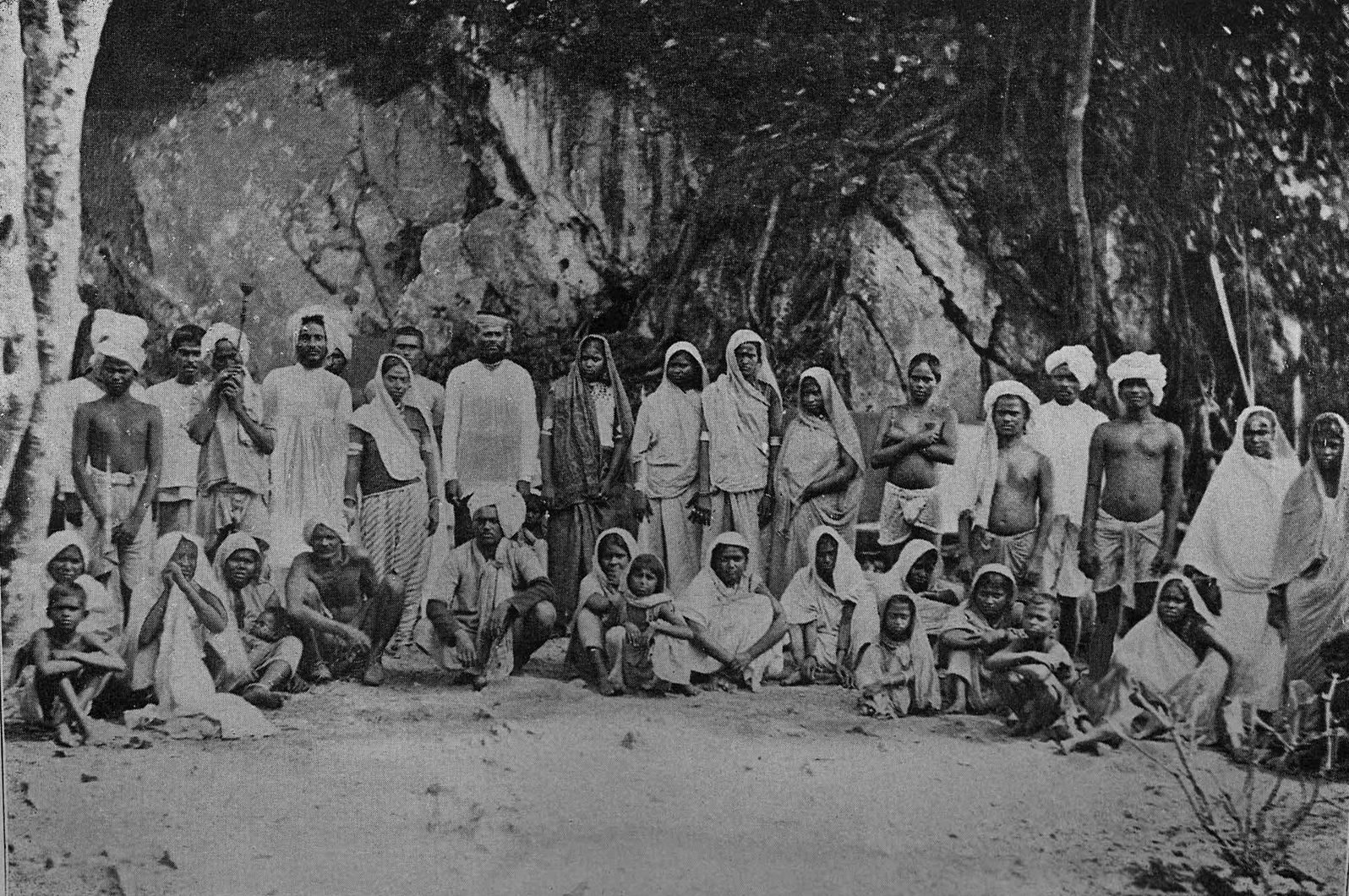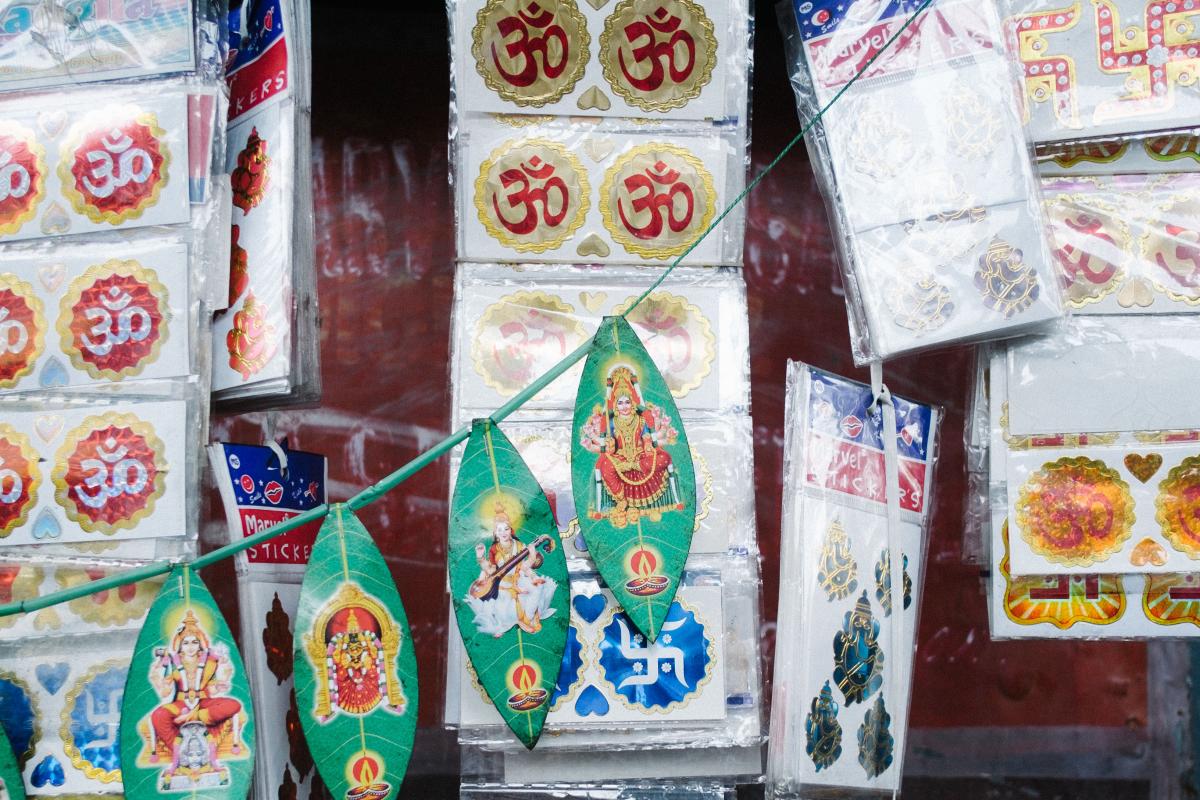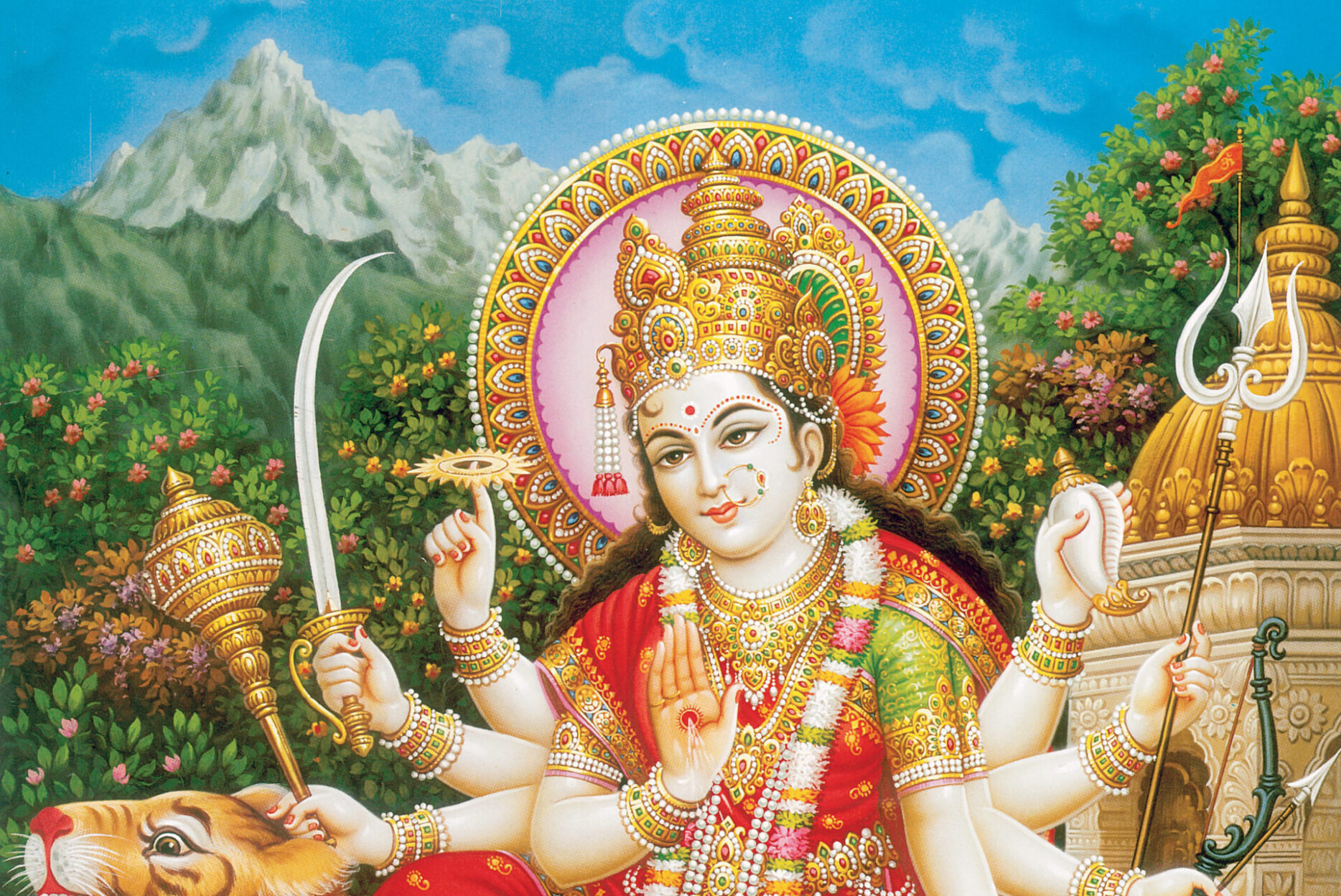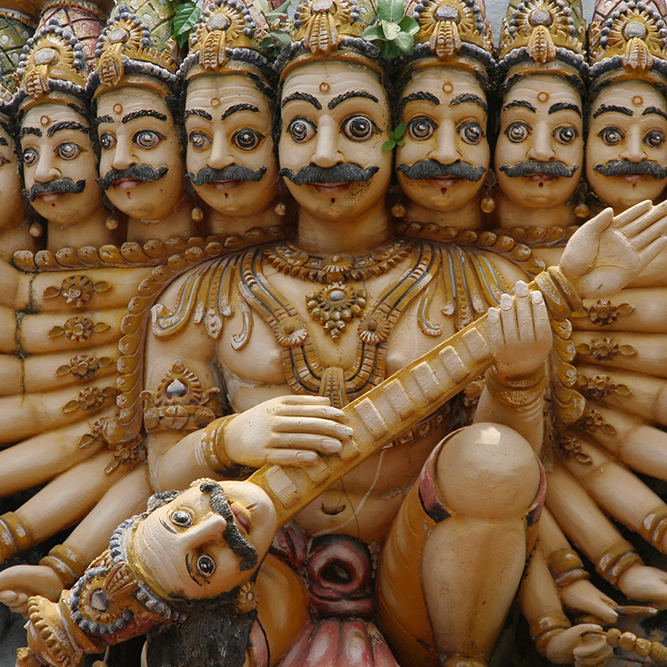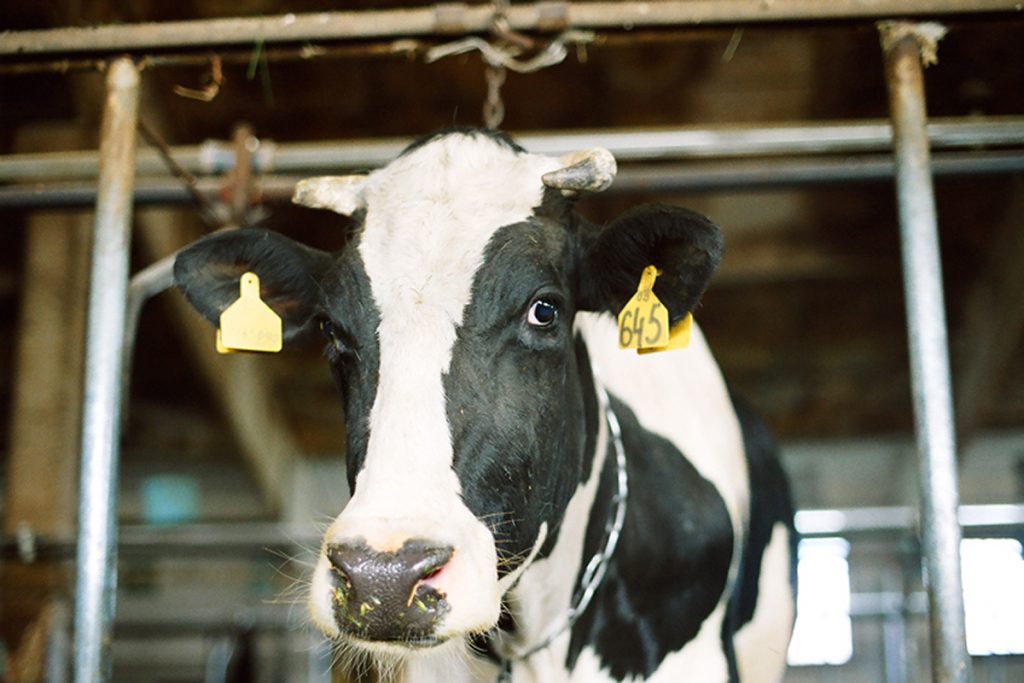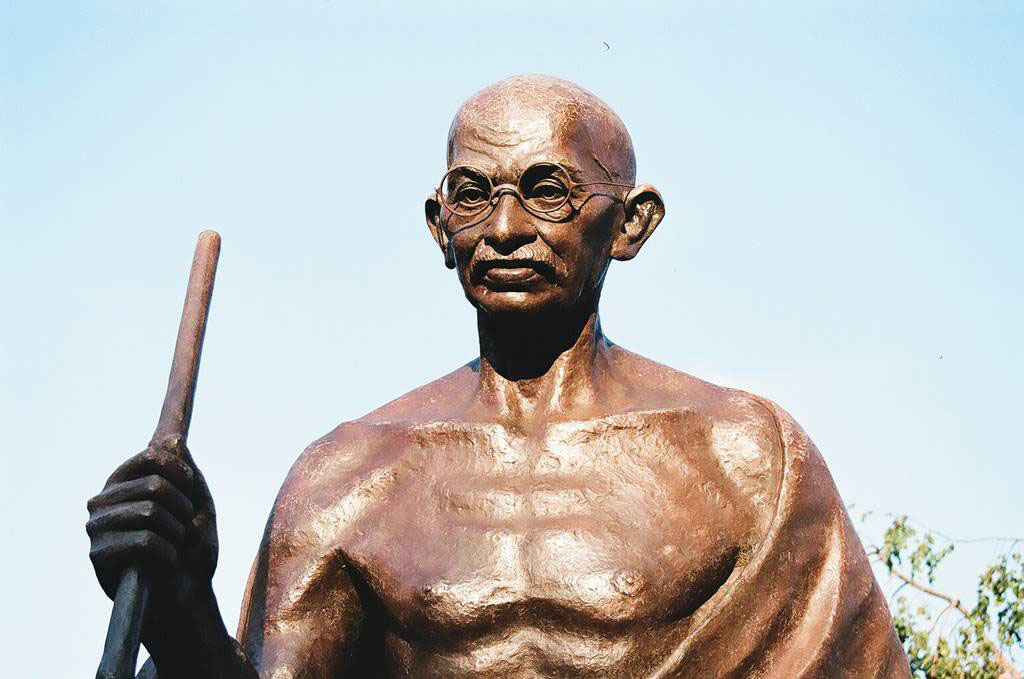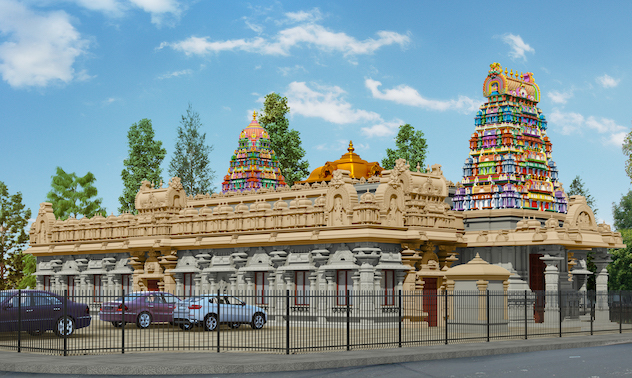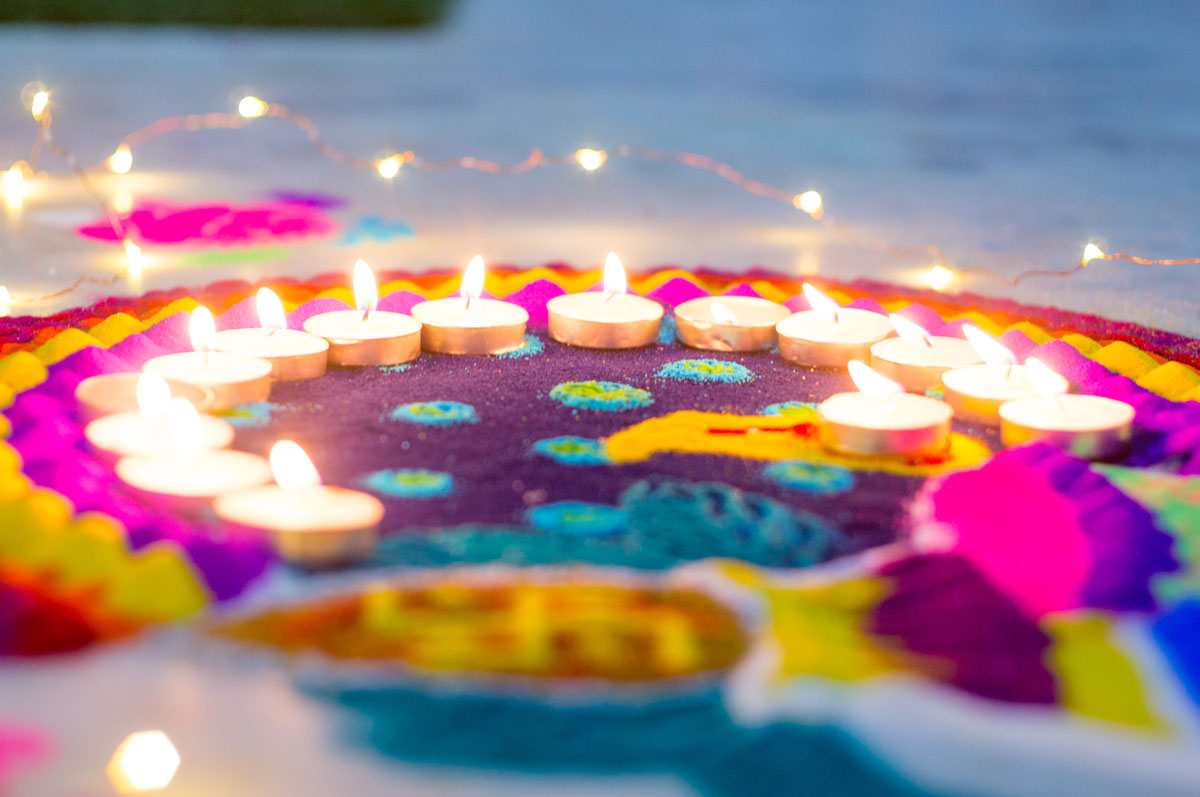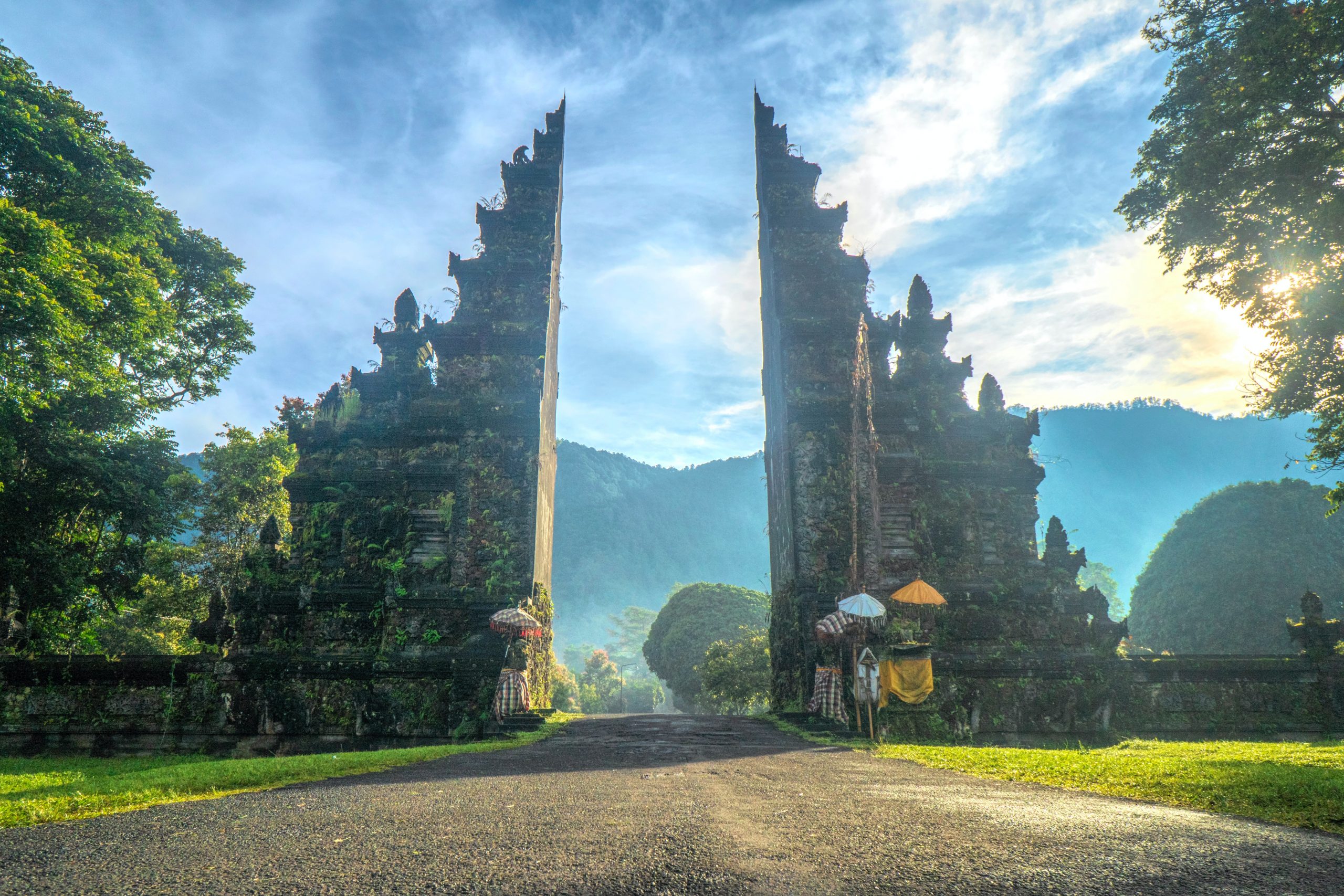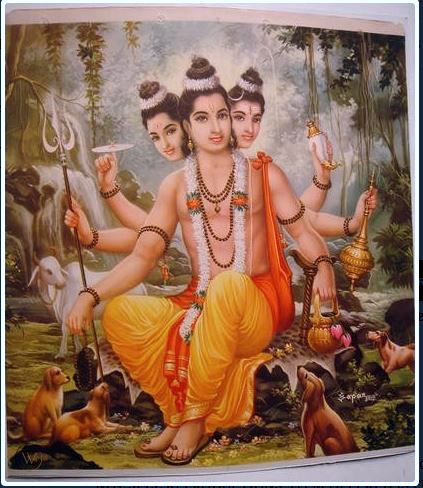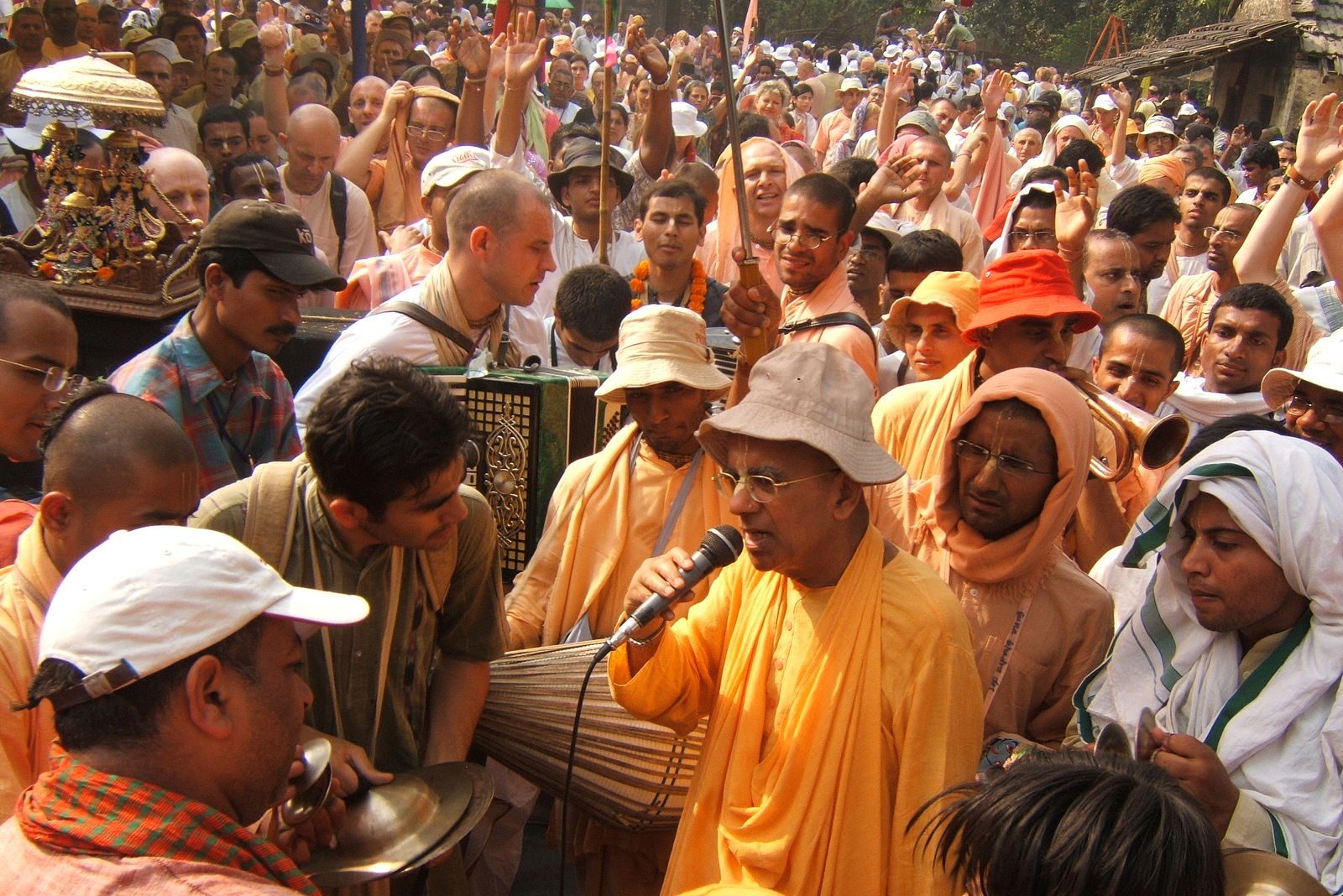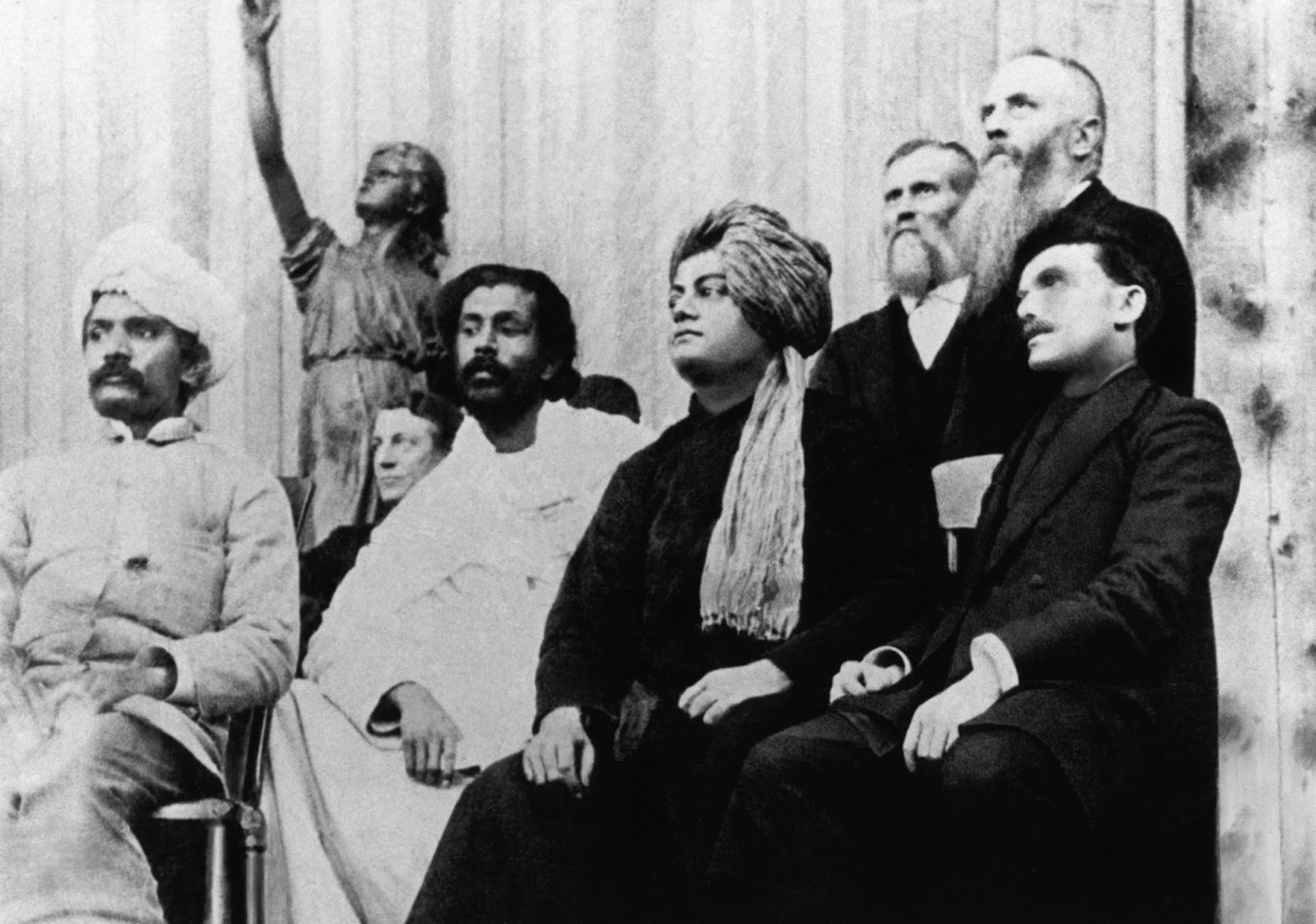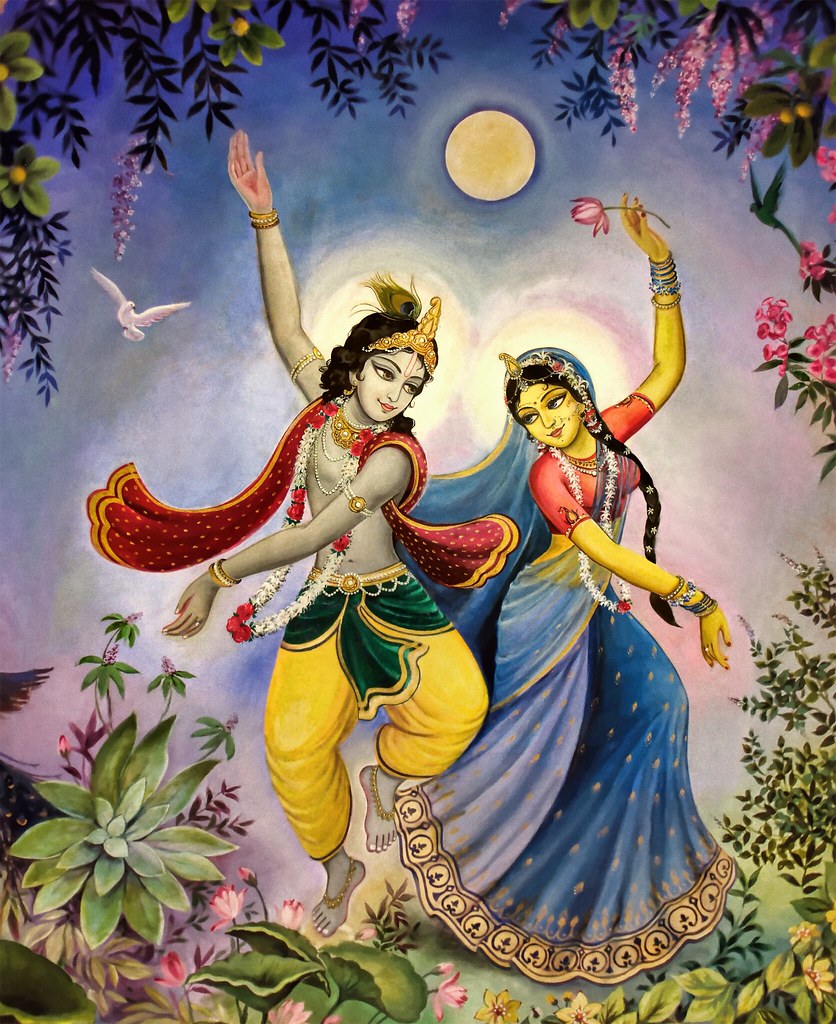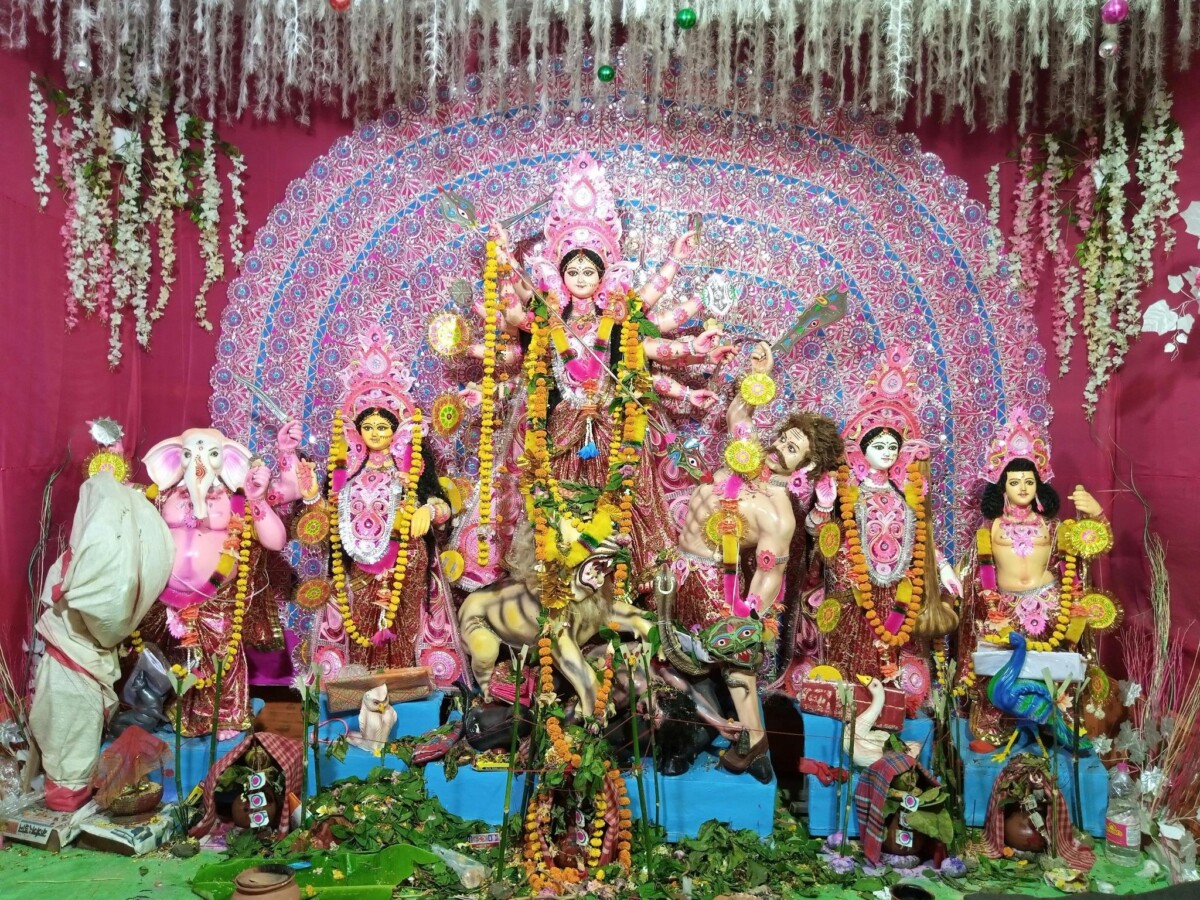
The often overlooked and misunderstood form of Shakti
Growing up as an Indian girl from Bihar, whose father’s job had us hopscotching across India, I often felt like a cultural sponge—soaking in accents, festivals, food, and customs from every stop. But one moment, in particular, from when I was thirteen, stands out vividly.
It was Durga Puja in my hometown, Ranchi. The air pulsed with the deep, hypnotic beats of the dhak (percussion instrument similar to a dhol), women’s voices soared with ulludhwani—that high-pitched sound made by curling the tongue—and the scent of incense mingled with fried luchis (savory snack) and bhog khichuri (a dish made of rice and lentils distributed as prasad) from makeshift stalls. I had been saving up my pocket money for months to buy a new salwar-kameez (because in Pujo (the Bengali styled celebration of Durga Puja) season, it was unthinkable to wear anything old!). Amid all this sensory overload, something caught my eye:

Caption: Kola Bau is to the right of Ganesha on the left side of the image.
A banana plant, draped in a red-bordered saree, standing demurely at the pandal near the icon of Ganesha.
“What’s going on here?” I asked my mom, pointing in disbelief.
“That’s Kola Bou,” she replied. “Kola Bou? The Banana Bride?” I sputtered, half-amused and half-bewildered.
That was the beginning of my quest to understand what on earth this saree-clad plant was doing at Durga Puja.
I launched what could only be described as a full-blown mini-investigation, darting from one adult to another, determined to crack the mystery. My first target was my friend’s mother, to whom I asked with all the seriousness I could muster: “Why is there a banana tree in a saree?” She smiled and replied, “She’s Ganesha’s wife.” That answer threw me into even deeper confusion—since when did Ganesha have a banana-tree bride? Unsatisfied, I cornered the Panditji next. My question was blunt: “Is she a devi?” His reply was far more philosophical: “She’s a representation of Durga’s power, Shakti itself, embodied in the form of nature.” It sounded majestic, but for my teenage brain it was a little too abstract to hold onto. Still restless, I turned to my mischievous cousin for clarity. He smirked and shrugged: “Because you can eat every part of it—from the flower to the fruit to the stem. Very practical, no?” That answer sent me into a fit of giggles, but oddly enough, it was the one that stuck with me the longest.
As I pieced together the stories, I began to understand that Kola Bou isn’t literally Ganesha’s wife (though that’s a popular folk explanation). She is Prakriti—the fertile, nourishing nature—wrapped in the grace of a bride. Her body is the banana plant, lush and giving, and she is bathed tenderly in the river before being adorned in her saree, receiving the same reverence as the Durga icon.
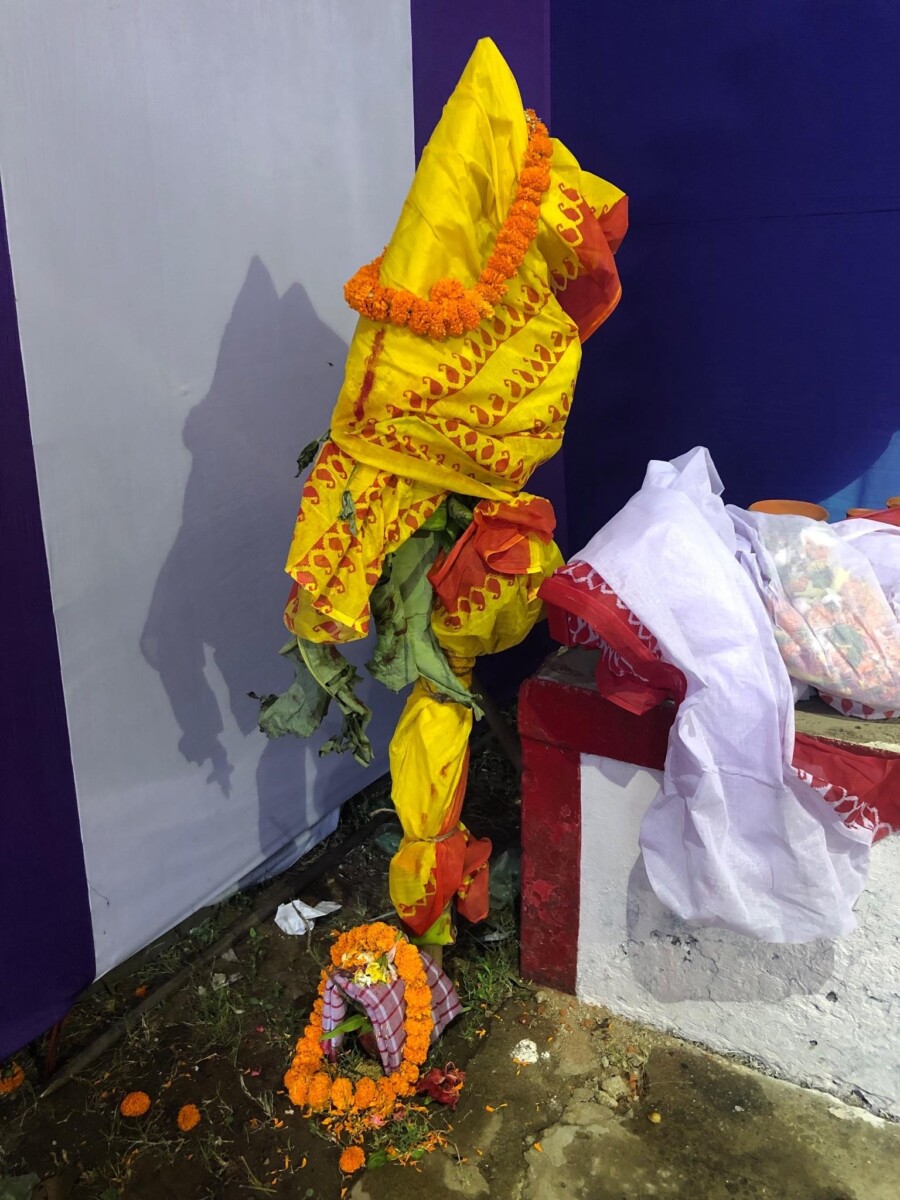
Caption: Kola Bau or the Nobopotrika.
The original śāstra teaching from which Kola Bou comes from shows the meeting of Vedic and regional/tribal spiritual traditions. The Navapatrikā Praveśa/Nobopotrika Probesh is the first ceremony of Durgā Pūjā in Bengal, and focuses on nine auspicious herbs and plants —
- Banana plant (Kola): Represents Brahmani Devi.
- Turmeric plant (Holud): Symbolizes Durga Devi herself.
- Arum plant (Kachu): Represents Chamunda Devi.
- Pomegranate tree (Dalim): Symbolizes Raktadantika Devi.
- Ashoka plant (Ashoka): Represents Shokarahita Devi.
- Wood apple (Bel): Represents Bhagavan Shiva.
- Rice plant (Dhan): Stands for Lakshmi Devi.
- Jayanti plant (Jayanti): Represents Kartiki Devi.
- Kanchu or Kachi: Symbolizes the Vedas and the overall nourishment of life.
So these nine are known as the Navapatrikā, and are the physical presence of these eight guardian mothers, plus Bhagavān Śiva. The different plants are all tied onto the Banana plant at the base, and then it is decorated in a red saree. Because the Banana Plant is the most prominent, it is known affectionately as Kola Bou. They are the most powerful conduit of Shakti, and it receives Pūjā first before the energy of these nine natural sources of energy and nourishment is transferred into the icon of Durga Devi, Maha Lakshmi, Maha Saraswati, Ganesha, and Kartikeya.
It is a testament to the ancient knowledge of our Hindu Dharma traditions that first and foremost, the energy and power needed to organize, safeguard, and nourish life on earth comes from the natural power of the feminine. Watching this at thirteen, I was struck not just by the pageantry of it, but by the contradictions it held.
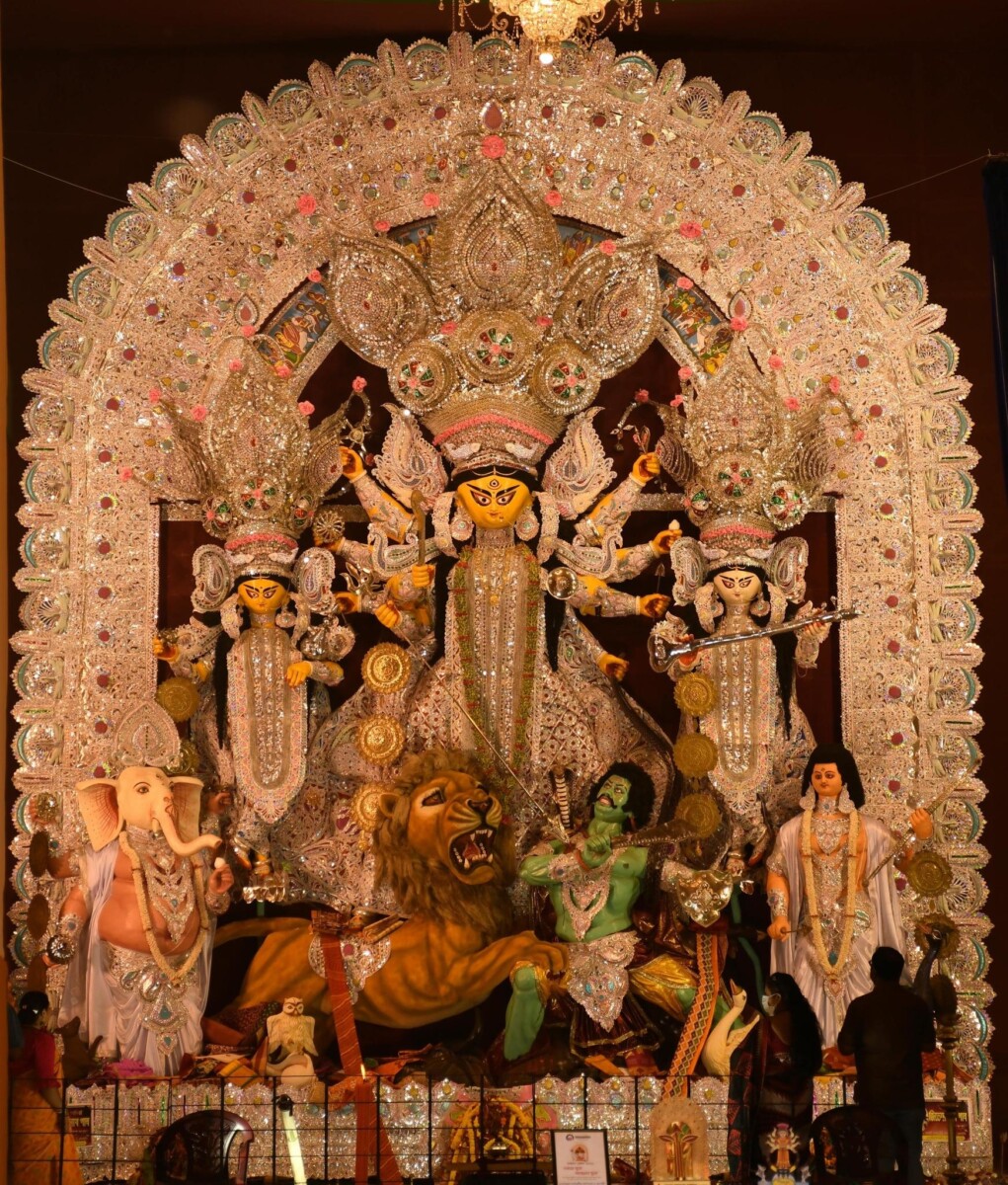
Caption: Icon of Maa Durga slaying Mahishasura rakshas.
On one hand, Durga herself is the ultimate symbol of Shakti—the fierce, unconquerable feminine who rises to slay Mahishasura when no other divine could. She is strength, she is empowerment, she is the divine warrior who stands as a reminder that women are never powerless.
And yet, in the same celebration, here was Kola Bou, draped in a saree like a shy bride—an abla nari (defenseless woman), quiet, submissive, carried to the river and back without a voice of her own. To me, even at that young age, it felt like an irony etched in ceremonies: how society bends women, humiliates them, makes them small, makes them submit to oppression. But when they can no longer be contained, when the weight of injustice becomes unbearable, they rise—and what emerges then is not weakness, but Durga, the Shakti.
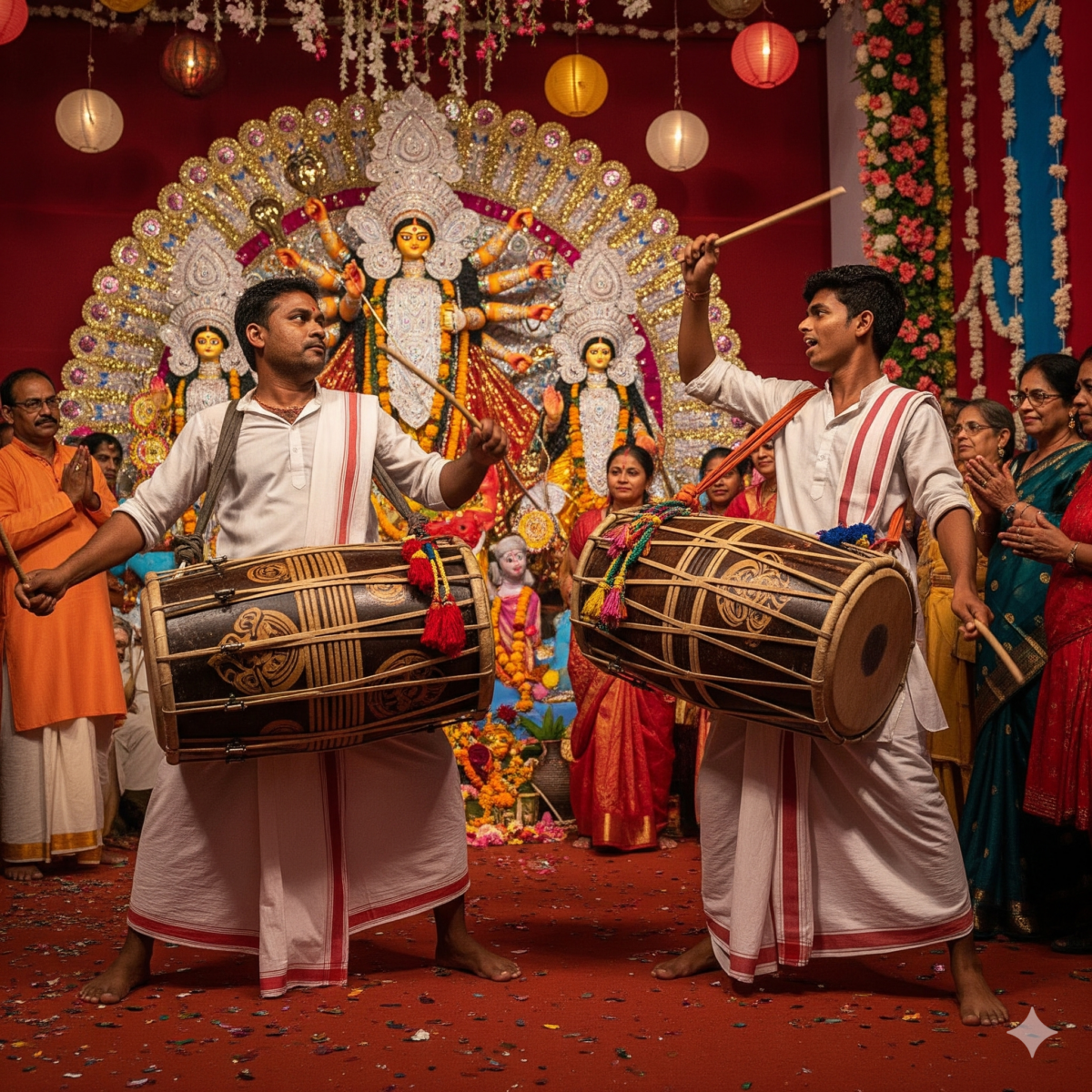
Caption: Men playing the dhak during Durga Puja
That realization hit me with the force of the dhak itself: Kola Bou wasn’t just a quaint tradition. She was a mirror of the cycle so many women endure—silenced, subdued, and then transformed into unstoppable power. The banana plant dressed as a bride was not only about fertility and nature, but also about the quiet resilience that, one day, bursts forth as divine strength.
Durga Puja itself was an experience that overwhelmed the senses. The thunderous dhak would rattle in my chest as the icon of Durga stood resplendent with her children. Women in red-and-white sarees smeared vermillion on each other’s cheeks during Sindoor Khela, laughing and crying at the same time, their faces glowing in devotion and camaraderie. The ulludhwani would pierce the air, sending shivers down my spine every single time.
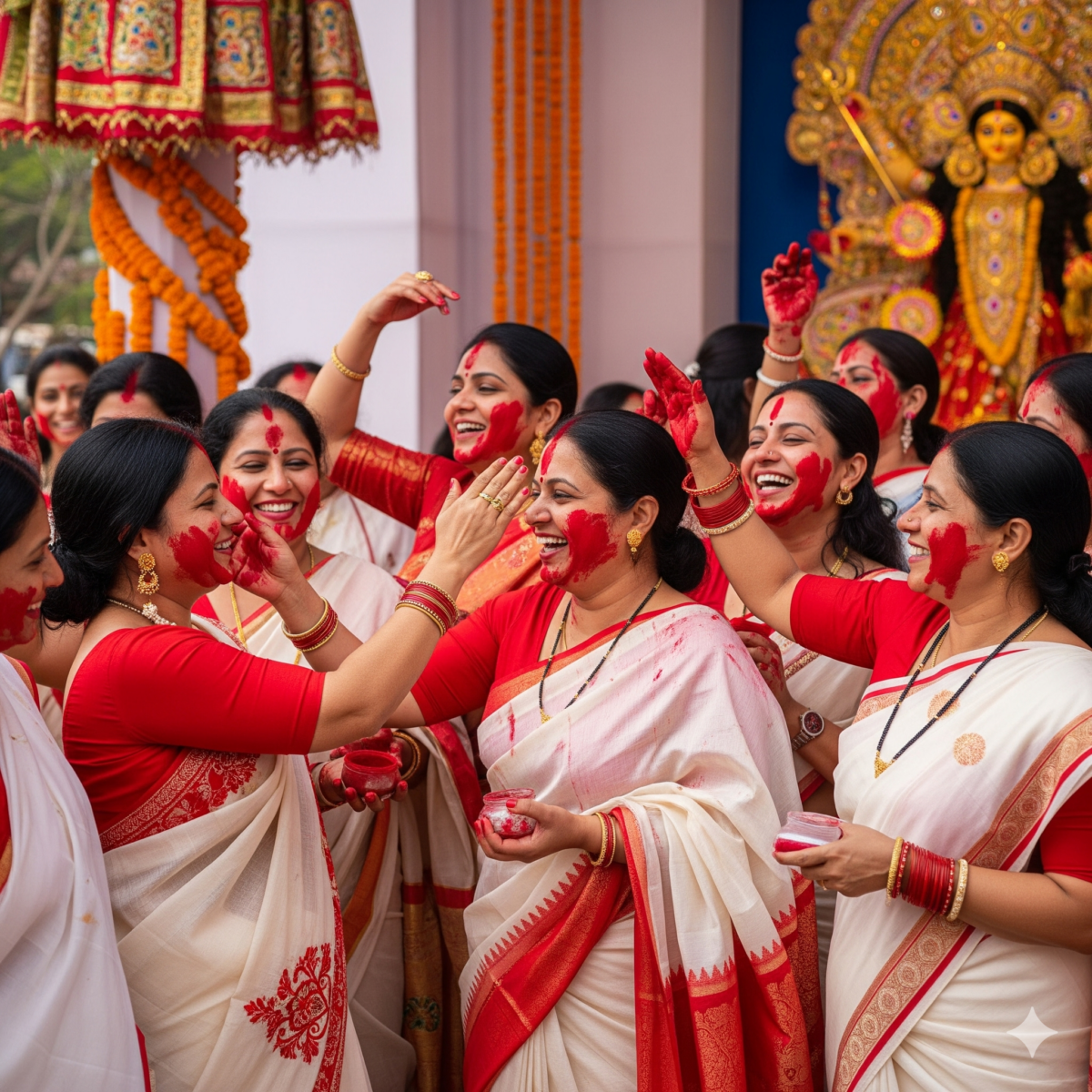
Caption: Women smearing each other faces with Sindoor during Sindoor Khela
And then there was me, standing in the middle of it all, heart pounding with the dhak, realizing for the first time that women’s empowerment wasn’t just in grand victories like Durga slaying Mahishasura, but also in the quiet endurance of Kola Bou, waiting for the moment when silence itself transforms into strength.
Kola Bou taught me something profound. Shakti, divine feminine power, isn’t locked away in temples or in scriptures—it’s alive in nature, in women, in traditions that blur the lines between the sacred and the everyday.
What started with a bemused question about a “banana bride” became, for me, a lifelong reminder: Shakti is everywhere, if only we look.


